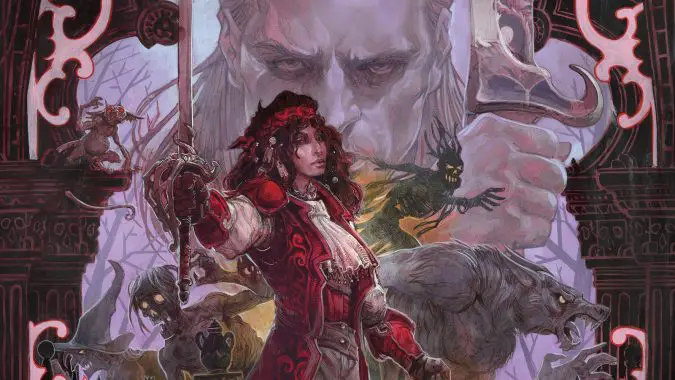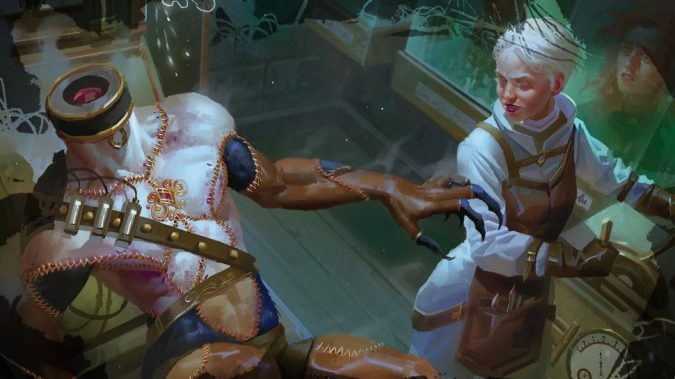Add some scares to your tabletop game with these DM tools in Van Richten’s Guide to Ravenloft

The latest sourcebook for Dungeons and Dragons 5th Edition has arrived, and if you’re looking for a ruleset to finally populate your campaign with rainbow elementals and playable unicorns, then Van Richten’s Guide to Ravenloft is most definitely not it. Instead, VGR provides new options for players in the form of Gothic Lineages and two new subclasses built around death, instructions for dungeon masters on how to add some chills and scares to the roleplaying experience, and a wealth of advice and optional rules for everyone at the table — even if your table isn’t a 5E D&D one, as many of the tools and ideas can be leveraged in almost any setting.
Horror can be fun in D&D and other TTRPGs, but Wizards of the Coast has done a great job of recognizing that joy in scares will not be universal. Expanding on the “Session Zero” concept from Tasha’s Cauldron of Everything dramatically, VGR dedicates a substantial amount of text to making sure that the DM remains cognizant of their players’ experiences and provides multiple tools and suggestions for building an environment that should provide a good time for all.
Chapter 4 is the best place to start if you’re a DM in my opinion, as it helps lay the groundwork for your campaign by giving you a whole host of tips and tricks for layering on the scares — adding fear and stress to the characters, laying out curses and traps to trip them up in a horrific manner, and using props like the Tarokka Deck (Ravenloft‘s version of the Tarot) and the Ouija-like Spirit Board to add some randomness and flavor to the proceedings. There’s also solid advice regarding pacing and narrative elements in horror that DMs should be familiar with, but probably my favorite idea is that of the “Survivors”, a mechanism by which your players get to inhabit other minor characters in a cutscene-style session in order to expand their knowledge and experience.

Gathering the parts for your campaign
VGR contains complete setting descriptions for 17 Domains of Dread — from Strahd‘s land of Barovia to the “Most Dangerous Game” of Valachan — as well as over 20 summaries of lesser Domains and the neighboring Mists that both allow and impede travel among the Domains in Ravenloft. While there’s a wealth of locations to choose from, each of the zones are on the small side (befitting their nature) and DMs more often than not want to leverage their own creative talents in building a unique campaign for their players.
Fortunately for them, VGR provides step-by-step instructions in Chapter 2 for designing your own Domain, as well as genre-specific advice for fleshing it out. The first step is to create your Darklord, as that entity is the one for which the Domain exists to begin with, a mechanism for entrapping the evil entity and tormenting them with their crimes. That’s not to say that the Darklord needs to be the primary antagonist of your campaign, but the tenor of the stories in the Domain will reflect the purpose of its existence to begin with. There is a discussion of 10 different genres of horror that you can leverage in whole or in part for your Domain, with 6 of them providing extensive ideas that you can choose or pick randomly via dice roll if you’re looking for inspiration; included are enough tables that you could design an entire Domain from scratch with just dice rolls if you need to.
With your Domain designed, the final step is populating it with some nasties for your players to encounter, and not just the typical ones you normally deal with in a horror story. VGR provides a setting-specific bestiary expansion with 5e stat blocks — I’m particularly fond of the Necrichor — but chapter 5 also includes some additional advice on modifying your standard monsters to give them more of a horror feel. An example provided are hobgoblin-like creatures called “goblyns” whose chosen method of attack is attempting to grapple and chew the face off of its victim; perhaps they’re no more challenging than a typical hobgoblin, but they’re certainly a lot more memorable.
Van Richten’s Guide to Ravenloft is an excellent update of a setting that has been around for decades, but even if you’ve never had your players cross paths with Strahd before, the sheer number of weapons provided are a welcome edition to any storyteller’s arsenal. Even if horror isn’t normally in your wheelhouse, there’s a lot of adventure to find in the mists of Ravenloft.
Please consider supporting our Patreon!
Join the Discussion
Blizzard Watch is a safe space for all readers. By leaving comments on this site you agree to follow our commenting and community guidelines.
 @Kalcheus
@Kalcheus



